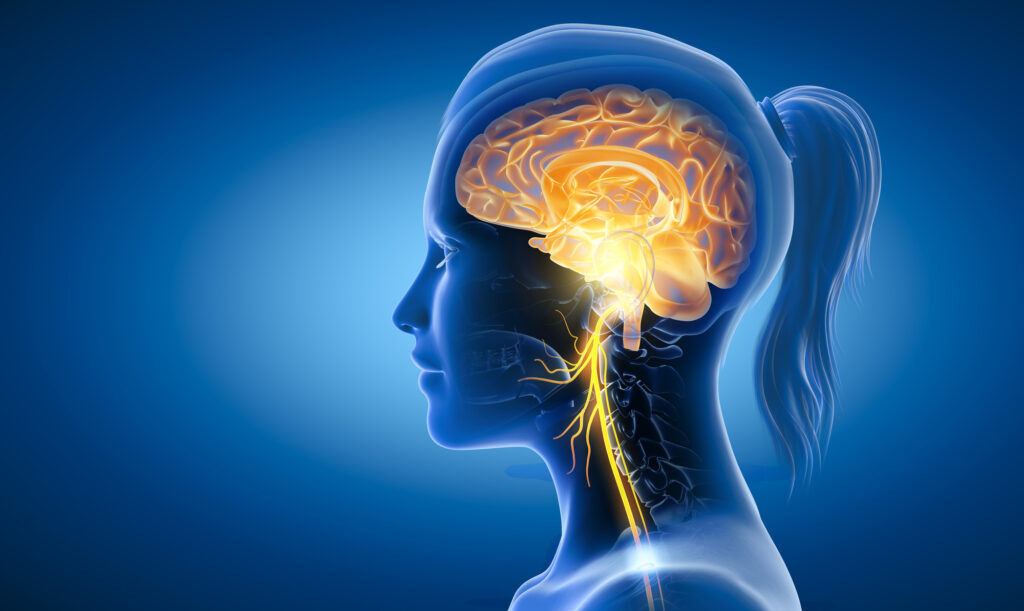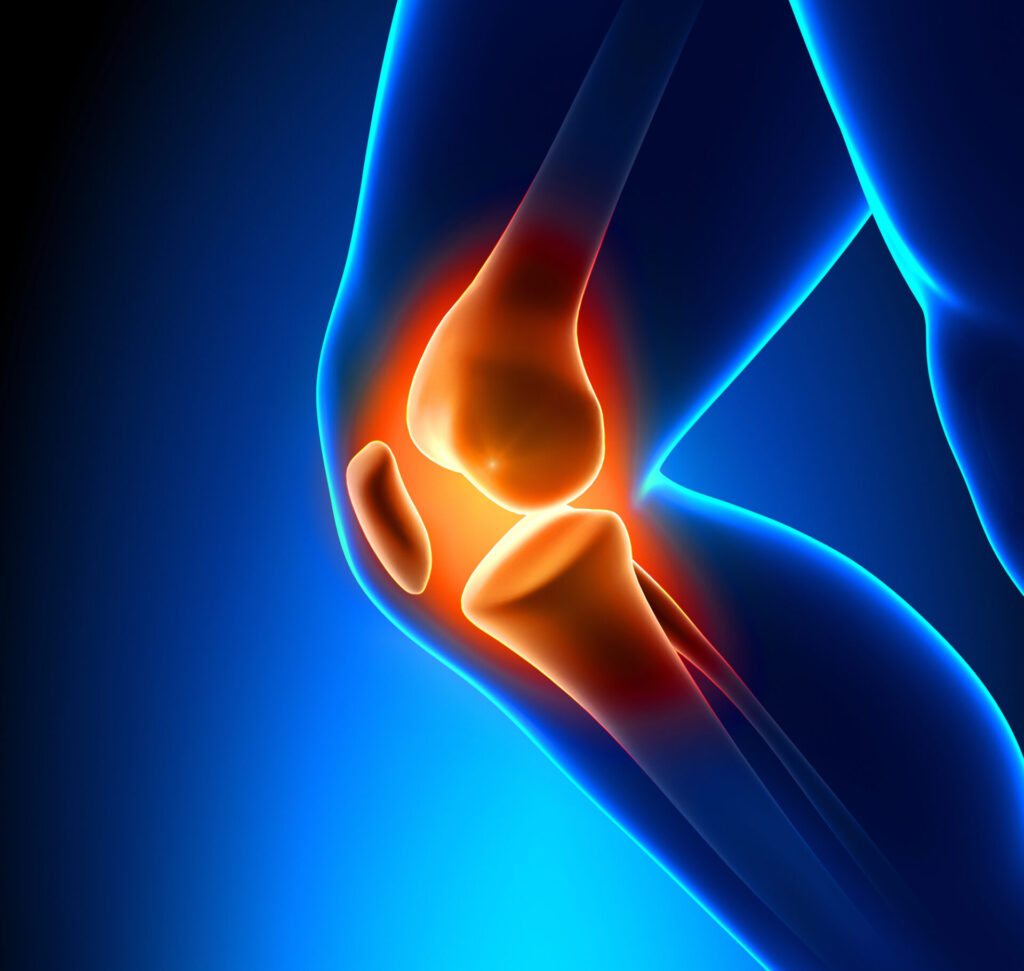Since March of 2020, there have been 670 million cases of covid19. About 5% (or 33 million cases) of those infected with covid have persistent loss of taste and smell 2 years after infection1. Research has found that women, those with more initial severity of disease, and those with nasal congestion were less likely to recover their taste and smell1 There is emerging research that suggests covid19 attacks the vagus and glossopharyngeal nerves (cranial nerves X and IX)1,7
There are intricate connections between our senses of taste and smell. Sweet, salt, bitter and sour are the only receptors we have on our tongue2. The remainder is detected in the nose from the smell molecules passing up from the back of the mouth to the back of the nose2. It is believed that covid affects the nasal, or olfactory, neuroepithelium. According to Dr. Boscolo-Rizzo:
“The olfactory neuroepithelium is located in the roof of the nasal cavities and is made up of olfactory sensory neurons and supporting cells that protect the fragile sensory cells. The olfactory sensory neurons give rise to an electrical signal that through numerous stations will reach the olfactory cortex in the frontal lobe of the brain, returning a conscious perception of odors.”2
The autonomic nervous system is comprised of the parasympathetic (PNS) and sympathetic nervous systems (SNS). The SNS is part of the fight or flight response while the PNS helps the body to “rest and digest”. The vagus and glossopharyngeal nerves are components of the PNS. The vagus nerve innervates the muscles of the pharynx, larynx, soft palate, stomach, esophagus, and most of the intestines. The vagus nerve also provides sensation behind the ear, parts of the ear canal and throat as well as taste near the root of the tongue.
Vagal tone refers to the activity of the vagus nerve and can be measured through heart rate variability (HRV). There are several devices that can be used to measure HRV from some brands of smart watches to bands around the chest and finger monitors. Symptoms of impaired vagal nerve function can include: Digestive issues, chronic pain/inflammation, postural holding patterns, low HRV, high blood pressure, irregular heart rate, IBS, hoarse voice, impaired gag reflex, difficulty swallowing, anxiety, depression, problems with sleeping and sleep apnea, clenching teeth, and unwarranted sweating3.
In April 2021 I enrolled in a course on the vagus nerve through the Institute of Physical Art (IPA). The IPA was founded in 1978 by Gregg and Vicky Johnson. They have been studying and developing treatment techniques for the vagus nerve and surrounding structures for the past several years. The IPA has pioneered the functional manual therapy (FMT) treatment approach. Treatment consists of a 3 pillar approach focusing on addressing the mechanical restrictions, neuromuscular control, and motor control components with each patient. FMT empower clinicians to treat the complex patient through an interconnected, systems approach. Those who have studied the IPA curriculum and mastered their skills, sit for a rigorous week of testing to become certified functional manual therapists (CFMT).
During the vagus nerve course, Gregg was discussing how covid attacks the vagus nerve. As he was teaching the functions of the vagus nerve and it’s link with covid, I asked myself if his treatment approach would help patients who have lost their taste and smell from covid.
The first patient I treated for covid loss of taste and smell was actually my mother. She was quite sick with covid in November 2020 and 6 months later, she still had not had any return of her taste and smell. Shortly after the vagus nerve course, I had treated her with the techniques I had learned from the IPA. It was in the middle of treatment that she was able to smell bread that was baking in the oven of my home. At the end of the treatment, her taste had returned. She had fully recovered after one treatment. I started treating family and friends who had also lost their taste and smell and was finding that their symptoms were also improving with the vagus nerve treatments. It was then that we started offering treatment of this condition at our clinics and was surprised with the number of patients still suffering from long covid loss of taste and smell (as well as other long covid symptoms). I’ve found the majority of patients seeking treatment have improvement in their symptoms. Those who receive early treatment, once they are out of isolation, typically require only 1 or 2 visits while those who have had their loss of taste and smell for 1-3 years typically take more visits, up to 8-10. All patients who have had this treatment have had some improvements in their symptoms and the majority have had full return of their taste and smell.
I recently had a patient with covid loss of taste and smell who was 2 weeks out from her covid diagnosis and feeling better except for the taste and smell. After the first treatment, she had sat down in her car and immediately could smell her husband’s unpleasant car freshener. She had full return of taste and smell after the first treatment.
Treatment of the vagus nerve consists of utilizing manual therapy techniques to address the joints and soft tissues of the cranium to decrease tension on the dura, nervous system, and foramen that the nerves pass through. The sphenoid, with its position cranially and intra orally, is one focus of treatment along with the intermaxillary suture. The sphenoid has influence over the tension of the dura and the cranial nerves as they pass through its foramen. The intermaxillary suture runs anterior to posterior in the hard palate which is commonly compressed. Treatment to this area helps to release the sinuses, expand the hard palate, and decrease neural tension.
The vagus nerve travels from the cranium, down the carotid sheath and to the thoracic inlet. It then travels to the heart before expanding in the abdomen to innervate the abdominal organs. Functional mobilization techniques are applied to the restricted areas of the vagus nerve as it travels along this path. Clinicians are trained to palpate where along the path that the nerve is dysfunctional. Mobilization of the nasal bones through intra nasal techniques are also performed.
Patients are instructed in a home exercise program which consists of Stanley Rosenburg’s “the basic exercise”, humming, gargling, cold stimulation, diaphragm breathing, and vagus nerve breathing.4
To perform “the basic exercise”, the patient will lie on their back with their hands clasped behind their head comfortably. Next the patient will look to the left with only their eyes, keeping their head in midline. When the patient yawns, sighs, swallows, or takes a deep breathe, they will have facilitated (or engaged) the vagus nerve. The patient will then repeat this while looking to the right. Once the patient performs this exercise to each side, the exercise is complete.4
If you are looking for a provider in your area that can treat the vagus nerve, click on “find a therapist” at www.instituteofphysicalart.com. Not all CFMTs listed on the website are trained in these techniques, so reach out to the clinic you are interested in for treatment to find out if they offer the vagus nerve treatments. There are contraindications/precautions for these treatments, which include but are not limited to diagnosed mental health disorders. Treatments should be performed under the supervision of a trained professional.
Author: Trista Larson, PT, DPT, CFMT
Dr. Trista Larson is an owner and clinician at Innovative Physical Therapy & Wellness, LLC in Green Bay, WI . She received her doctorate in physical therapy from the Mayo Clinic in 2009. She specializes in the treatment of chronic pain, orthopedic conditions, back/neck pain, abdominal pain/visceral manipulation, and several other conditions. In 2020 she traveled to Steamboat Springs, CO for a rigorous week of testing for a certification that a limited number of PTs have achieved. She passed her certification with honors to become a certified functional manual therapist. That same year she was honored and humbled to receive the American Physical Therapy Association-Wisconsin (APTA-WI) PT of the Year Award. She was also awarded APTA-WI PT of the Year (Honorable Mention) for 2022.
References:
- BMJ, BKJ Tan et al, July 2022: Prognosis and persistence of smell and taste dysfunction in patients with covid-19: meta-analysis with parametric cure modelling of recovery curves.
- Internal Emergency med November 2022, DiGennaro et al. Incidence of long covid-19 in people with previous SARS-Cov2 infection: a systematic review and meta-analysis of 120,970 patients.
- “Accessing the Healing Power of the Vagus Nerve”, Stanley Rosenberg, ©2017
- “The Vagus Nerve-Balancing the Autonomic System”, Gregg Johnson, 2022, Institute of Physical Art
- European Society of Clinical Microbiology and Infectious Diseases, February 2022: “Pilot study suggests long covid could be linked to the effects of SARS-CoV-2 on the vagus nerve”.





